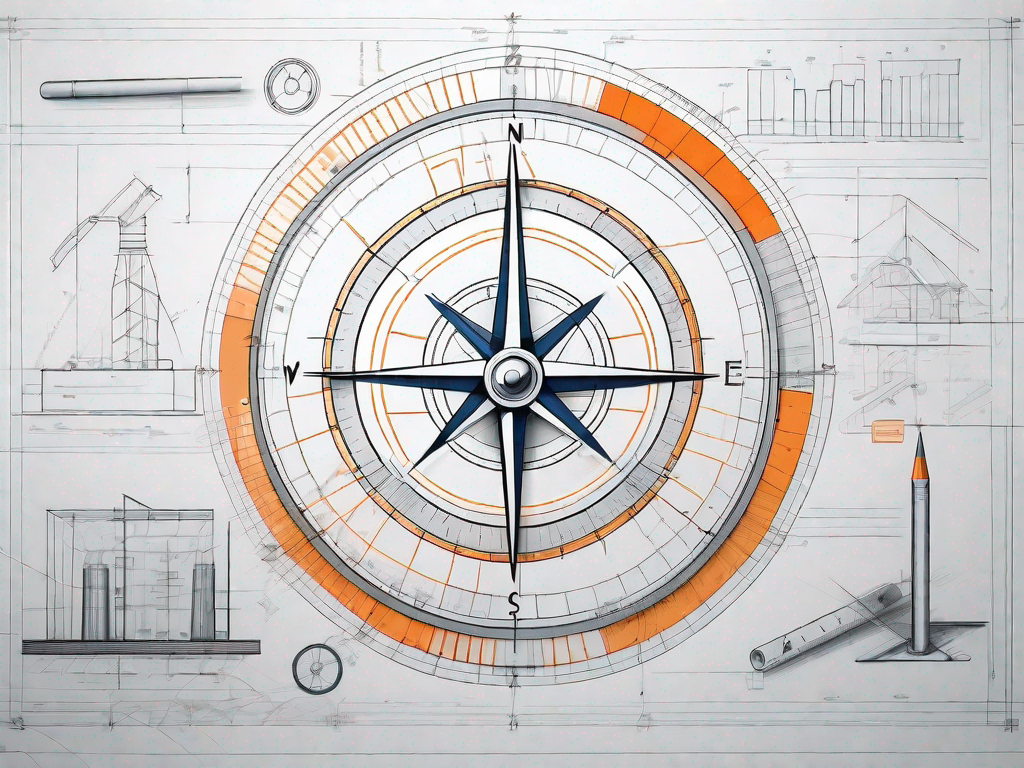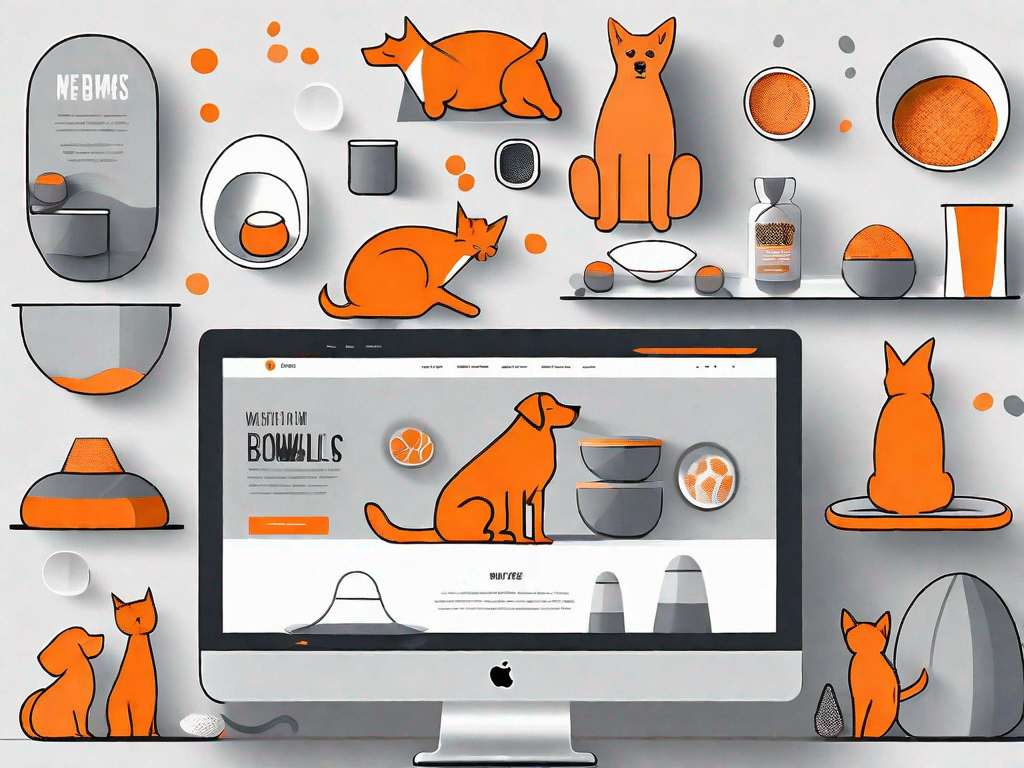.svg)
Design Strategy Template for Construction and Infrastructure Projects
.svg)

In the fast-paced world of construction and infrastructure projects, having a well-defined design strategy is crucial to ensure project success. A design strategy acts as a roadmap that guides project teams through the various stages of a project, helping them make informed decisions and achieve project goals efficiently. By outlining a clear vision and actionable steps, a design strategy provides structure and direction, enabling project teams to effectively manage resources, mitigate risks, and deliver high-quality outcomes.
Understanding the Importance of a Design Strategy in Construction
When it comes to construction projects, the role of design strategy cannot be overstated. A design strategy serves as a foundation for the entire project, establishing the framework within which all design decisions are made. It helps align the project team's efforts and ensure that everyone is working towards a common goal.
One of the key benefits of a well-planned design strategy is its ability to improve project success. By clearly defining project goals and objectives, a design strategy enables project teams to focus their efforts on what truly matters. This results in better decision-making, improved efficiency, and ultimately, a higher likelihood of project success.
The Role of Design Strategy in Project Success
A robust design strategy plays a vital role in the success of any construction project. It provides a framework for project teams to work within, ensuring that all decisions and actions are aligned with the project's goals and objectives. By establishing clear guidelines and processes, a design strategy helps project teams navigate challenges and make informed decisions.
Furthermore, a design strategy fosters effective collaboration and communication among project stakeholders. By clearly articulating project requirements and expectations, it helps ensure that all parties are on the same page, reducing the risk of misunderstandings and conflicts.
Moreover, a well-planned design strategy promotes innovation within construction projects. By encouraging creative thinking and exploration of alternative solutions, it opens up opportunities for unique and groundbreaking designs. This not only enhances the aesthetic appeal of the project but also sets it apart from others in the industry.
Key Benefits of a Well-Planned Design Strategy
Implementing a well-planned design strategy offers numerous benefits to construction and infrastructure projects. One significant advantage is improved project efficiency. By defining project goals, objectives, and milestones, a design strategy enables project teams to streamline their efforts and allocate resources effectively. This leads to time and cost savings, ultimately enhancing project outcomes.
Additionally, a design strategy helps mitigate risks by identifying potential issues and outlining strategies to address them. By conducting a thorough risk assessment, project teams can proactively identify and mitigate risks, reducing the likelihood of costly delays or failures.
Furthermore, a well-planned design strategy takes into account sustainability considerations. It promotes the use of eco-friendly materials and energy-efficient designs, contributing to a greener and more environmentally conscious construction industry. This not only benefits the environment but also enhances the reputation of the project and the organizations involved.
In conclusion, a design strategy is a fundamental aspect of successful construction projects. It provides a roadmap for project teams, ensuring that all decisions and actions are aligned with the project's goals and objectives. By promoting collaboration, innovation, efficiency, risk mitigation, and sustainability, a well-planned design strategy sets the stage for a successful and impactful construction endeavor.
Essential Elements of a Design Strategy Template
A successful design strategy template encompasses various essential elements that provide a comprehensive framework for project teams. These elements ensure that all critical aspects of the project are considered and that the design strategy aligns with the project's goals and objectives.
When embarking on a design project, it is crucial to have a well-defined strategy in place. This strategy acts as a roadmap, guiding the project team towards success. Let's explore some of the key elements that make up an effective design strategy template.
Identifying Project Goals and Objectives
The first step in creating a design strategy is to clearly identify and define the project's goals and objectives. This involves understanding the client's requirements, project constraints, and desired outcomes. By establishing precise and measurable goals, project teams can align their efforts and drive results.
For example, if the project involves designing a new website for a client, the goals and objectives may include increasing user engagement, improving website navigation, and enhancing the overall user experience. By clearly defining these goals, the design team can focus their efforts on achieving them.
Defining the Project Scope
Defining the project scope is another crucial element of a design strategy template. This involves identifying the boundaries and deliverables of the project, as well as the specific requirements that need to be met. A clearly defined project scope ensures that project teams have a shared understanding of what needs to be achieved.
When defining the project scope, it is important to consider factors such as time constraints, budget limitations, and resource availability. By clearly outlining the scope, the design team can effectively manage expectations and deliver a successful project within the defined parameters.
Stakeholder Analysis and Engagement
Successful construction projects require effective stakeholder management. A design strategy template should include a thorough stakeholder analysis, identifying key project stakeholders and their interests. Engaging stakeholders throughout the project ensures their input is considered, fostering a collaborative and inclusive project environment.
Stakeholders can include clients, end-users, project managers, and other individuals or groups who have a vested interest in the project's outcome. By involving stakeholders in the design process, the project team can gain valuable insights and ensure that the final design meets their needs and expectations.
Risk Assessment and Mitigation
Risk assessment is a crucial element of any design strategy template. By conducting a comprehensive analysis of potential risks and uncertainties, project teams can develop robust risk mitigation strategies. This includes identifying risk triggers, defining contingency plans, and implementing measures to minimize the impact of potential risks.
During the design process, various risks can arise, such as technical challenges, budget overruns, or changes in project requirements. By proactively identifying and addressing these risks, the design team can minimize disruptions and ensure the project stays on track.
For example, if there is a risk of a key team member leaving the project midway, a contingency plan could involve cross-training other team members to ensure continuity. By considering potential risks and developing mitigation strategies, the design team can enhance the project's chances of success.
By incorporating these essential elements into a design strategy template, project teams can create a solid foundation for their design projects. This comprehensive approach ensures that all aspects of the project are considered, leading to successful outcomes and satisfied clients.
Developing a Comprehensive Design Strategy for Construction Projects
Developing a comprehensive design strategy is a multi-step process that requires careful planning and consideration. By following a structured approach, project teams can create a design strategy that addresses all relevant aspects of the project and supports the achievement of project goals and objectives.
When embarking on the journey of developing a design strategy, it is crucial to take into account the unique characteristics of the project. Each construction project comes with its own set of challenges and requirements, and a well-defined strategy ensures that these are effectively addressed.
Steps to Create a Robust Design Strategy
Creating a robust design strategy involves several key steps. These steps include:
- Conducting a thorough project analysis to understand project requirements and constraints.
A project analysis serves as the foundation for a successful design strategy. It involves delving into the project's intricacies, such as site conditions, regulatory requirements, and client expectations. By thoroughly understanding these factors, project teams can develop a strategy that aligns with the project's unique context.
- Defining project goals, objectives, and milestones.
Clear and well-defined goals are essential for any construction project. They provide a sense of direction and help project teams stay focused throughout the design process. Objectives and milestones further break down these goals into achievable targets, ensuring that progress can be measured and tracked effectively.
- Identifying the project scope and deliverables.
A clearly defined project scope sets the boundaries for the design strategy. It outlines the specific tasks, responsibilities, and deliverables that need to be accomplished. By establishing a comprehensive scope, project teams can avoid scope creep and maintain a streamlined approach to design.
- Conducting a stakeholder analysis to understand stakeholder interests and concerns.
Stakeholders play a crucial role in any construction project. Their interests, concerns, and expectations need to be carefully considered when developing a design strategy. Conducting a stakeholder analysis helps identify key stakeholders and understand their perspectives, enabling project teams to incorporate their input into the strategy effectively.
- Developing a risk mitigation plan to address potential project risks.
Construction projects are inherently complex and involve various risks. A robust design strategy includes a comprehensive risk mitigation plan that identifies potential risks and outlines strategies to minimize their impact. By proactively addressing risks, project teams can enhance project outcomes and reduce the likelihood of costly delays or disruptions.
- Establishing a clear communication and decision-making framework.
Effective communication and decision-making are vital for the success of any design strategy. By establishing a clear framework, project teams can ensure that information flows smoothly between stakeholders and that decisions are made in a timely and informed manner. This promotes collaboration and fosters a cohesive approach to design.
Incorporating Sustainability into Your Design Strategy
In today's world, sustainable design is of paramount importance in construction projects. A design strategy should consider environmental, social, and economic aspects, aiming to minimize the project's environmental impact and enhance its long-term sustainability. This includes incorporating green building practices, optimizing resource usage, and promoting eco-friendly alternatives.
By integrating sustainability into the design strategy, project teams can contribute to a greener future and create buildings that are not only aesthetically pleasing but also environmentally responsible. This can involve the use of renewable energy sources, implementing energy-efficient systems, and designing for efficient water management.
Utilizing Technology in Design Strategy
Technology plays a crucial role in construction project management and design strategy development. Integrating technological advancements into the design strategy can streamline processes, enhance collaboration, and improve project outcomes. This includes using Building Information Modeling (BIM), project management software, and other digital tools to enhance communication and decision-making.
BIM, in particular, has revolutionized the construction industry by enabling the creation of detailed 3D models that capture the entire lifecycle of a building. This technology allows project teams to visualize and simulate various design options, identify potential clashes or conflicts, and optimize construction processes. By leveraging technology, design strategies can be more efficient, accurate, and cost-effective.
Furthermore, project management software provides a centralized platform for tracking progress, managing resources, and facilitating communication among team members. This improves coordination and ensures that everyone is working towards a common goal.
In conclusion, developing a comprehensive design strategy for construction projects requires a systematic and well-thought-out approach. By considering project requirements, incorporating sustainability principles, and leveraging technology, project teams can create strategies that optimize design outcomes and contribute to the overall success of the project.
Case Studies: Successful Design Strategies in Infrastructure Projects
Case Study 1: A Sustainable Infrastructure Project
In this case study, we examine a successful infrastructure project that incorporated sustainable design principles into its design strategy. By prioritizing energy efficiency, utilizing recycled materials, and implementing green building practices, the project achieved LEED certification and significantly reduced its environmental impact. The design strategy acted as a guiding framework, ensuring that sustainability considerations were integrated into every stage of the project.
Case Study 2: A Technologically Advanced Construction Project
Our second case study explores a construction project that embraced technological advancements as part of its design strategy. By implementing cutting-edge construction methodologies and utilizing innovative construction materials, the project was able to enhance efficiency, improve safety, and accelerate project timelines. The design strategy provided a roadmap for incorporating technology into every aspect of the project, resulting in successful outcomes.
In conclusion, a well-planned design strategy template is essential for construction and infrastructure projects. It provides clarity, direction, and structure, enabling project teams to make informed decisions, mitigate risks, and achieve project goals efficiently. By incorporating elements such as goal identification, stakeholder engagement, risk assessment, and sustainability considerations, project teams can create design strategies that result in successful project outcomes. Embracing technological advancements further enhances the effectiveness of a design strategy, allowing for streamlined processes and improved collaboration. Ultimately, a robust design strategy is a key factor in the success of construction and infrastructure projects.
Related Posts
Let's
Let’s discuss how we can bring reinvigorated value and purpose to your brand.







.svg)